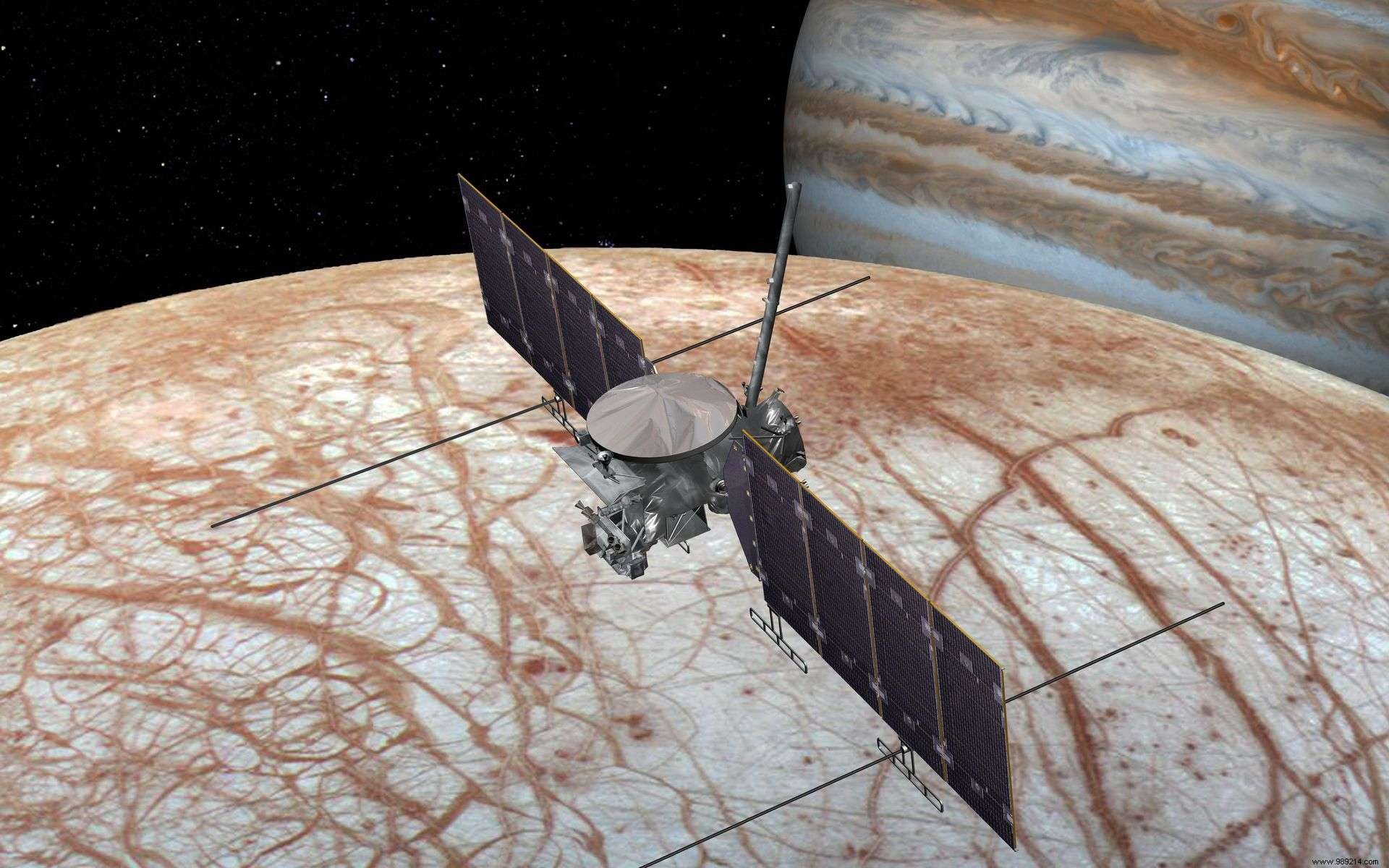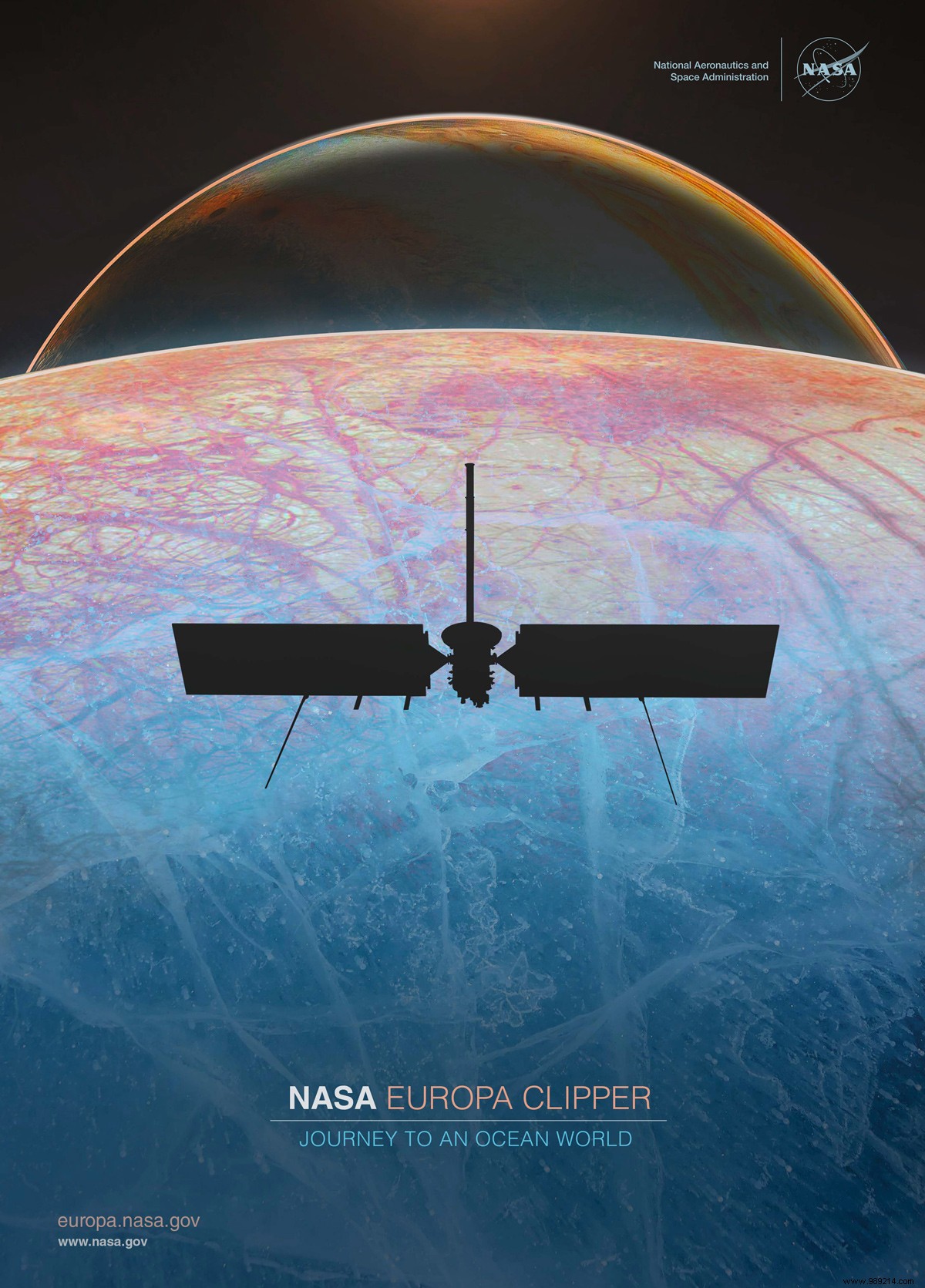The U.S. Europa Clipper orbiter will aim to search for signs of life on Jupiter's moon Europa in the 2030s. In the meantime, NASA has recently released a new poster of this highly anticipated mission.
Last year, NASA confirmed its intention to explore Jupiter's moon Europa. We know indeed since the passage of the probes Voyager in 1979 and the Galileo mission that the moon shelters under its surface a global ocean, initially salty. On the other hand, we do not know for the moment if this water is capable of supporting life. To try to determine it, NASA is preparing a mission, named Europa Clipper.
The probe will launch probably in 2024 to arrive in the Jovian system in the early 2030s . Once there, it will remain in orbit around Jupiter for four years, the time for it to perform 45 low-altitude flybys Europe (from 2,700 to 25 kilometers above sea level), studying its icy surface with each passage.
Another major objective of the mission will be to take detailed images of the moon's surface in an effort to select possible sites for further exploration in the future. This mission (the date of which remains to be determined) will aim to collect samples about ten centimeters below the surface, to detect possible bio-signatures.

To carry out its mission, Europa Clipper s will rely on a series of advanced instruments. Among them are an ice-penetrating radar, a short-wave infrared spectrometer, a topographic imager, and an ion and neutral mass spectrometer. These tools will be essential to determine the thickness and composition of the ice that covers it, but also to understand what is hidden below.
This mission will be "a giant leap in our search for oases that could support life in our own heavenly courtyard" , said the year Curt Niebur, head of the Europa Clipper project. “We are confident that this versatile set of scientific instruments will lead to exciting discoveries on a highly anticipated mission.”
In preparation for this momentous event, NASA recently released a new mission poster. As you can see below, the painting depicts the orbiter facing the icy surface of Europa, with Jupiter suspended in the background.

Let us also recall that the European Space Agency (ESA ) also plans to send a probe into the Jovian system. The Jupiter Icy Moons Explorer mission (abbreviated JUICE) will take off in 2022 to arrive in January 2030 around Jupiter. The space probe will then fly by the moons Callisto, Europa and Ganymede several times. Finally, it will come into orbit around Ganymede in September 2032 for further study.